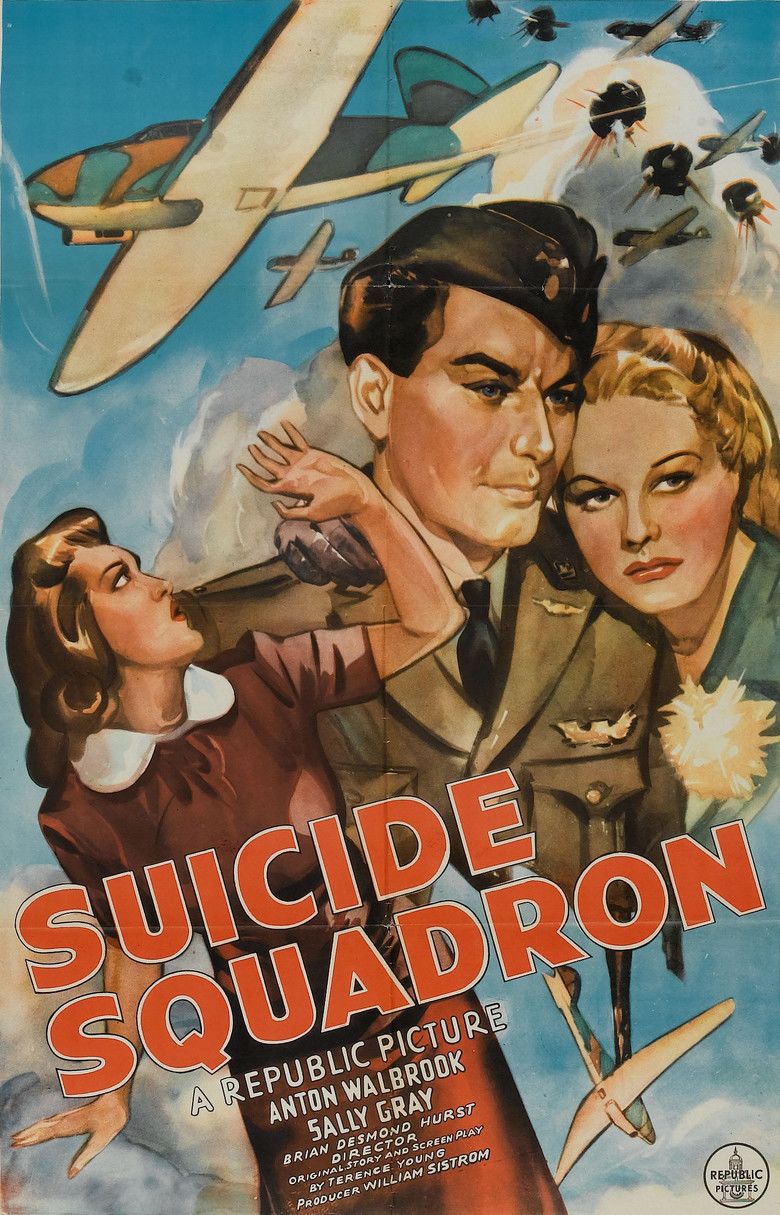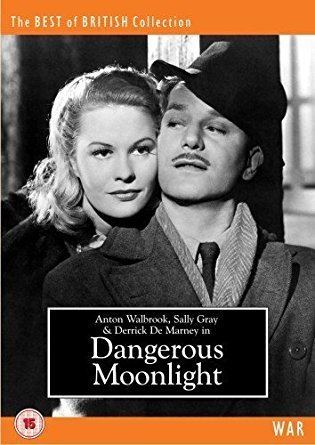Dangerous Moonlight
6.6 /10 1 Votes6.6
Language English | 6.4/10 IMDb Duration Country United Kingdom | |||||||||||||||||||||||||||||||||
 | ||||||||||||||||||||||||||||||||||
Release date 26 June 1941 (1941-06-26) (UK) | ||||||||||||||||||||||||||||||||||
Anton walbrook in dangerous moonlight hurst 1941
Dangerous Moonlight (also known as Suicide Squadron in the USA) is a 1941 British film, directed by Brian Desmond Hurststarring Anton Walbrook, best known for its score written by Richard Addinsell with orchestrations by Roy Douglas, which includes the Warsaw Concerto. Among the costumes, the gowns were designed by Cecil Beaton.
Contents
- Anton walbrook in dangerous moonlight hurst 1941
- Dangerous moonlight
- Plot
- Cast
- Production
- Reception
- In popular culture
- Books
- References

The film's love-story plot told mainly in flashbacks, revolves around the fictional composer of the Warsaw Concerto, a piano virtuoso and "shell-shocked" combat pilot, who meets an American war correspondent in Warsaw, and later returns from America to join the RAF in England to continue to fight against the Germans and their occupation of Poland.
Dangerous moonlight
Plot
During the German invasion of Poland, Polish airman and piano virtuoso Stefan Radetzky (Anton Walbrook) meets American reporter Carole Peters (Sally Gray). He volunteers to fly a "suicide mission" against Germany, but is not selected. Radetzky is among the last to escape Warsaw and months later, in New York, he and Carole meet again, and marry.
In England, Radetzky gives a public concert and reveals that he has come back to fight, volunteering to fly as a pilot in a Polish squadron, fighting in the Battle of Britain, even though Carole fears he will be killed. His final mission ends with his self-sacrifice by crashing into a German aircraft. He is badly injured in the crash and suffers from amnesia.
Later, Radetzky is in a London hospital, recovering from his injuries. He begins to remember his past, recalling composing the "Warsaw Concerto," while the Germans bomb the city, and when he first met his wife. Sitting at the piano, Radetzky sees Carole and says, "Carole, it's not safe to go out with you when the moon is so bright", repeating the first words he ever spoke to her.
Cast
As appearing in Dangerous Moonlight, (main roles and screen credits identified):
Production
Dangerous Moonlight was produced by the British unit of RKO, which financed it. Since music was such a key element in the film, Walbrook, who was an accomplished amateur pianist, is seen playing in the film, although the music on the soundtrack is played by the professional pianist Louis Kentner. Kentner's involvement was initially uncredited, as he thought that being seen to be playing film music would not help his career. He changed his mind on seeing the film's success. Aerial scenes were actually filmed in combat and feature the No 74 Squadron (Squadron lettering "ZD") Supermarine Spitfire fighters that flew in the Battle of Britain.
Reception
Released initially in the UK as Dangerous Moonlight, it was a box office success in Great Britain, although contemporary reviews were generally unfavourable, with The New York Times in its review, noting that it was "... mainly ... a sentimental fable in which the excellent Anton Walbrook, so eloquent as the Hutterite leader in "The Invaders," and Sally Gray make a listless and anemic pair of lovers. Derrick De Marney does much better by the roguish character of an Irish daredevil. None of them has lifted the film above the level of a hackneyed fiction."
Dangerous Moonlight was a melange of art and warfare, with the best-remembered scenes involving the Warsaw Concerto, composed by Richard Addinsell, one of the most beloved classical pieces that emerged from the period. Walbrook was not pleased with his performance and considered the film his least favourite. When released in the United States, the film was renamed Suicide Squadron in a slightly abbreviated 83 minute version, and distributed by Republic Pictures under lease, although its UK release was through RKO Radio British. Despite relying heavily on its film music, Variety noted that the sound quality was noticeably poor, especially in early scenes, although the aerial sequences, however, were particularly effective.
In a modern appraisal of essentially an obscure wartime propaganda film, Leonard Maltin commented that Dangerous Moonlight was an "intelligently presented account of concert pianist who becomes a member of a British fighter squadron during WW2; musical interludes (including Richard Addinsell's well-known Warsaw Concerto) well handled. Look for Michael Rennie in a small role."
In popular culture
Dangerous Moonlight is mentioned in the British television series Dad's Army episode "Is There Honey Still for Tea?", an in-joke as John Laurie had featured in the film.
Books
Theirs is the Glory. Arnhem, Hurst and Conflict on Film takes film director Brian Desmond Hurst's Battle of Arnhem epic as its centerpiece and chronicles Hurst's ten films on conflict including Dangerous Moonlight. Released in hardback on 15 September 2016 with almost 400 pages and over 350 images "this book also shows why Hurst was an enigma, but a master of the genre, and at his very best when focusing on the vast canvas of film" (from dust jacket). ISBN 978-1-911096-63-4. Publisher Helion and Company and co-authored by David Truesdale and Allan Esler Smith.
References
Dangerous Moonlight WikipediaDangerous Moonlight IMDb Dangerous Moonlight themoviedb.org
